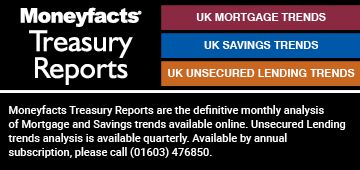Rachel Springall, Finance Expert at Moneyfacts, said:
“Savings providers have slashed rates across fixed rate bonds month-on-month, a sentiment which may continue over the next few weeks as they jostle positions in the top rate tables amid volatile swap rates. The incentive for savers to lock into a longer-term bond may have waned in recent months and this month the average one-year fixed bond rate now returns 0.50% more than the longer-term rate. There may still be some challenger banks going against the rate-cutting trend, as these brands can increase rates over the shorter-term to attract deposits for their future lending. However, as we have seen countless times, these deals can be short-lived due to being in the spotlight. Despite these rate cuts, the shelf-life of a fixed bond remained unchanged at 39 days, so there is a good stock of deals for savers to choose from, but the rates offered are lower month-on-month. Savers must also keep in mind that, despite falls, average fixed rates across one-year bonds are 1.04% higher year-on-year.
“Despite rate drops on fixed rate bonds and ISAs, the average easy access rate has shown resilience and even rose slightly month-on-month. Not to go unnoticed, after a fall last month, the average easy access Cash ISA rate bounced back this month to stand at 3.30%, just 0.01% shy of its 2023 high. With the number of Cash ISAs rising to 500 this month, there is a positive momentum for ISA season. Those savers who locked into a one-year fixed rate ISA a year ago will find the average rate pays 1.10% more year-on-year. Consumers only have up to 5 April to use their current ISA allowance, and it is worth doing so to shield their pot from tax. According to the Bank of England, there was a total inflow of £47 billion into Cash ISAs during 2023, and with the ISA reforms coming into effect in April, it will be interesting to see if more savers use Cash ISAs this year.
“Savers may be disappointed to know that the cuts across fixed rate bonds have played their part in a substantial drop in options that pay above the Bank of England base rate of 5.25%. Indeed, around 99% of savings accounts that pay interest on a £5,000 balance now pay below 5.25%. This should encourage savers to review their accounts regularly and switch if they are getting a poor return on their hard-earned cash, particularly if they have an easy access account with a high street bank. Regardless of which account savers choose for their personal goals, providers will need to work hard to balance the ongoing volatility surrounding fixed interest rate expectations and their own deposit targets.”
Rachel Springall, Finance Expert at Moneyfacts, said:
“Savings providers have slashed rates across fixed rate bonds month-on-month, a sentiment which may continue over the next few weeks as they jostle positions in the top rate tables amid volatile swap rates. The incentive for savers to lock into a longer-term bond may have waned in recent months and this month the average one-year fixed bond rate now returns 0.50% more than the longer-term rate. There may still be some challenger banks going against the rate-cutting trend, as these brands can increase rates over the shorter-term to attract deposits for their future lending. However, as we have seen countless times, these deals can be short-lived due to being in the spotlight. Despite these rate cuts, the shelf-life of a fixed bond remained unchanged at 39 days, so there is a good stock of deals for savers to choose from, but the rates offered are lower month-on-month. Savers must also keep in mind that, despite falls, average fixed rates across one-year bonds are 1.04% higher year-on-year.
“Despite rate drops on fixed rate bonds and ISAs, the average easy access rate has shown resilience and even rose slightly month-on-month. Not to go unnoticed, after a fall last month, the average easy access Cash ISA rate bounced back this month to stand at 3.30%, just 0.01% shy of its 2023 high. With the number of Cash ISAs rising to 500 this month, there is a positive momentum for ISA season. Those savers who locked into a one-year fixed rate ISA a year ago will find the average rate pays 1.10% more year-on-year. Consumers only have up to 5 April to use their current ISA allowance, and it is worth doing so to shield their pot from tax. According to the Bank of England, there was a total inflow of £47 billion into Cash ISAs during 2023, and with the ISA reforms coming into effect in April, it will be interesting to see if more savers use Cash ISAs this year.
“Savers may be disappointed to know that the cuts across fixed rate bonds have played their part in a substantial drop in options that pay above the Bank of England base rate of 5.25%. Indeed, around 99% of savings accounts that pay interest on a £5,000 balance now pay below 5.25%. This should encourage savers to review their accounts regularly and switch if they are getting a poor return on their hard-earned cash, particularly if they have an easy access account with a high street bank. Regardless of which account savers choose for their personal goals, providers will need to work hard to balance the ongoing volatility surrounding fixed interest rate expectations and their own deposit targets.”











